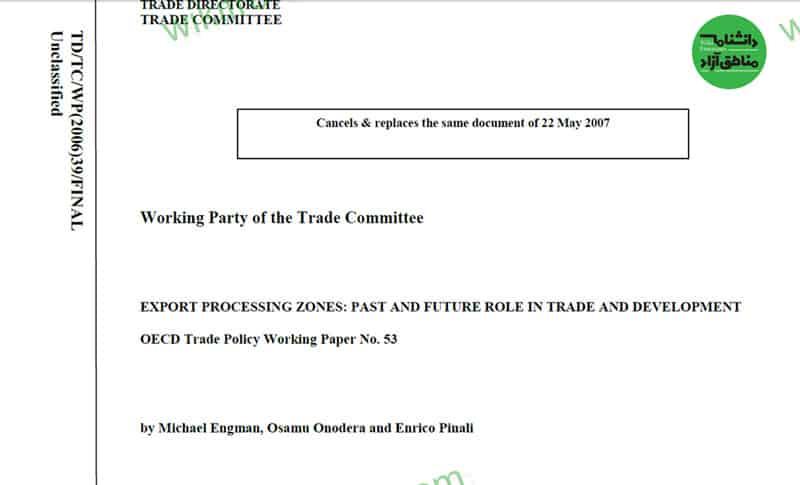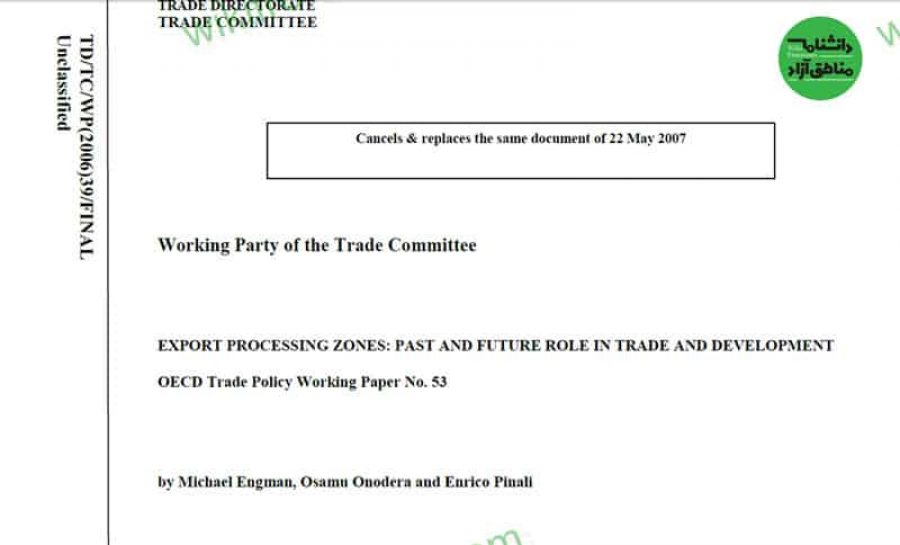- تعداد صفحات: 70 -
- تهیه کننده: OECD سازمان همکاری و توسعه اقتصادی -
- سال ایجاد: 2007 -
- زبان سند: انگلیسی
گزارش OECD : مناطق پردازش صادرات: نقش گذشته و آینده در تجارت و توسعه
ABSTRACT
This paper studies export processing zones (EPZs) which have become increasingly popular as a policy tool for development and export-oriented growth, and can be found in 130 countries around the world.
The report consists of four parts. Part I provides a broad overview on the current use of EPZs including the evolution of EPZ policy, their objectives and how these are achieved, and the incentives commonly offered. It presents case studies from China, India and Russia illustrating new trends and policies. Part II then provides a review of the economic costs and benefits of EPZs with particular focus on their trade and employment implications. Part III presents an analysis of how common EPZ policies relate
to trade rules. It reviews the relationship between EPZs and the WTO Agreements such as the WTO Agreement on Subsidies and Countervailing Measures (ASCM), followed by a discussion of how EPZs are commonly treated in RTAs. Part IV concludes. EPZs are a sub-optimal policy from an economic point of view since it benefits the few and
distorts resource allocation, but may be useful as a stepping stone to trade liberalisation on a national basis. Governments should consider all available policy options, and conduct a thorough cost/benefit analysis before implementation.



